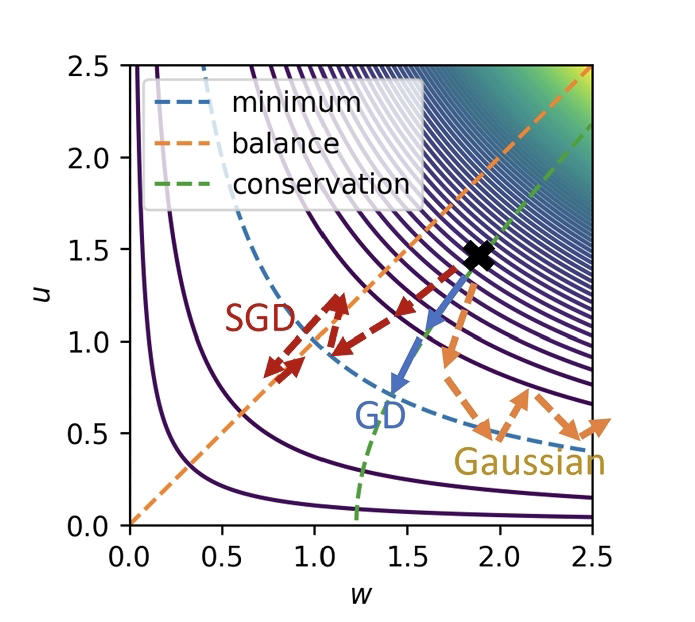Translate
sabato 14 giugno 2025
# aibot: noise balance and stationary distribution of stochastic gradient descent.
lunedì 9 giugno 2025
# gst: double burst transition in hypergraphs.
martedì 13 maggio 2025
# gst: hyperchaos and complex dynamical regimes in N-d neuron lattices.
venerdì 3 settembre 2021
# gst: apropos of transitions, when a liquid droplet takes a turn (as a swimming behavior of amoebas)
sabato 14 agosto 2021
# gst: asymmetric ferroelectric bi-stability with two unequal stable polarization states by broken inversion symmetry
mercoledì 30 giugno 2021
# gst: weird Nature; randomly arranged nanowire networks seem to behave, at the edge of chaos, like cortical neuronal cultures
giovedì 18 giugno 2020
# gst: critical points seem to act behind the complex behavior of collectives.
sabato 13 giugno 2020
# chem: bizarre phase transitions in tantalum disulfide, it should be a conducting metal, but in the real world, it acts like an insulator
sabato 12 ottobre 2019
# gst: exploring the lifespan of a liquid droplet
<< Current theories state that the droplet's diameter-squared decreases in proportion to time (classical law); however, this period only accounts for a small portion of the drop's evolution. As the diameter approaches the unobservable micro- and nano-scale, molecular dynamics have to be used as virtual experiments and these show a crossover to a new behaviour, with the diameter now reducing in proportion to time (nano-scale law). >>
<< It is fascinating that intuition based on everyday observations are a hindrance when attempting to understand nanoscale flows, so that, as in this research, one has to lean on theory to enlighten us. >> James Sprittles.
The lifespan of an evaporating liquid drop. University of Warwick. Oct 10, 2019. https://m.phys.org/news/2019-10-lifespan-evaporating-liquid.html
Rana A.S., Lockerby D.A., Sprittles J.E. Lifetime of a Nanodroplet: Kinetic Effects and Regime Transitions. Phys. Rev. Lett. 123, 154501 Oct 9, 2019. https://journals.aps.org/prl/abstract/10.1103/PhysRevLett.123.154501


